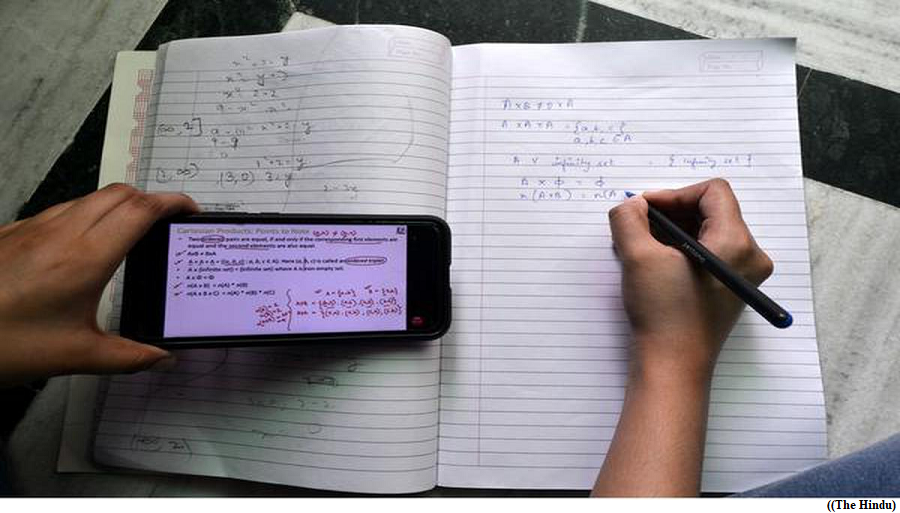How KFON aims to bridge the digital divide in Kerala (GS Paper 3, Infrastructure)

Why in news?
- Recently, the Kerala government officially launched the Kerala Fibre Optical Network (KFON), one of its flagship projects envisaged during the first term of Chief Minister Pinarayi Vijayan.
Background:
- On November 7, 2019, the Left Democratic Front (LDF) government in Kerala announced that access to the Internet would be a basic right in the State, becoming the first State in the country to do so. The declaration came three years after the UN had passed a resolution recognising Internet access as a basic human right.
- The announcement was accompanied by a detailed plan to ensure that it would become a ground reality, with the setting up of the Kerala Fibre Optic Network (KFON), through which Internet connections would be provided free of cost to 20 lakh below-poverty-line (BPL) families.
- The project is aimed at ensuring universal Internet access and narrowing the digital divide, which has become especially acute after the COVID-19 outbreak.
How is the government running the network and providing services?
- The Kerala government’s role involves setting up the vast infrastructure required for providing Internet, especially to remote corners of the State. The network has reached remote locations, including tribal hamlets in Wayanad and elsewhere, which had remained out of the information superhighway until now.
- The cabling works, stretching to 34,961 km, piggybacks on the Kerala State Electricity Board’s (KSEB) existing infrastructure.
- KFON Limited is, in fact, a joint venture of the KSEB and the Kerala State Information Technology Infrastructure Ltd (KSITIL).
- In July 2022, the Department of Telecommunications (DoT) granted KFON an infrastructure provider (IP) licence and also approved it as an internet service provider (ISP).
How will the plan be rolled out?
- The aim was to provide Internet connections to 14,000 BPL families, with 100 each from the State’s 140 assembly constituencies in the first phase. The panchayats and the urban local bodies were given the responsibility of choosing the beneficiaries. However, the process of selection has been slow, with many local bodies delaying the submission of a list of beneficiaries from their area.
- As of now, Internet connection has been provided to 7,000 BPL families across the State. Each household will get 1.5 GB of data per day at 15 Mbps speed. In the second phase, Internet services will be made available to the public at affordable rates.
- Free Internet connections for BPL families and government institutions is just one part of the ₹1,548 crore KFON project. The rest of the network will be monetised.
What is the road ahead?
- The commissioning of the first phase of KFON comes after the Chief Minister declared Kerala as India’s first fully e-governed State. The e-office system has already been implemented in the Secretariat, district collectorates, commissionerates and directorates.
- As many as 900 government services, comprising all the services usually required by the public, are now available through a single-window portal.
- The government has also begun a digital literacy campaign at the grassroot level through various local bodies to ensure that everyone is equipped to access basic services through the Internet.
- If the KFON project achieves what it has envisaged, it can bring about a change at the ground level as far as access and opportunities are concerned.
Food standards save lives, say FAO and WHO on World Food Safety Day
(GS Paper 2, International Organisation)
Why in news?
- Recently, ‘A Guide to World Food Safety Day’ was released by the United Nations bodies Food and Agriculture Organization (FAO) and World Health Organization (WHO), on the fifth edition of World Food Safety Day June 7, 2023.
- It said the food standards save lives by playing a crucial role in preventing food-borne illnesses. Food safety, nutrition and food security are inextricably linked.

Vulnerability:
- An estimated 600 million fall ill after eating contaminated food and 420 000 die every year, resulting in the loss of 33 million healthy life years.
- The young and the vulnerable are disproportionately affected by the 200 different foodborne diseases that result from unsafe food, most of which are preventable. Children under five years of age carry 40 per cent of the foodborne disease burden, with 125,000 deaths every year.
- Unsafe food containing harmful bacteria, viruses, parasites or chemical substances causes more than 200 diseases, ranging from diarrhoea to cancers. It also creates a vicious cycle of disease and malnutrition, particularly affecting infants, young children, elderly and the sick.
- Foodborne diseases impede socioeconomic development by straining healthcare systems and harming national economies, tourism and trade. US$ 110 billion is lost each year in productivity and medical expenses resulting from unsafe food in low- and middle-income countries.
Codex standards:
- The Codex Alimentarius Commission, established in 1963 by the Food and Agriculture Organization of the United Nations (FAO) and WHO, develops harmonized international food standards, guidelines and codes of practice to protect the health of consumers and ensure fair trade practices in the food trade.
- It also promotes coordination of all food standards work undertaken by international governmental and nongovernmental organizations.
- The Codex Alimentarius has an impact on everyone, from consumers, food producers and processors to national food control agencies.
Way Forward:
- Food can only be safe if every person involved in its production, distribution and preparation ensures its safety.



